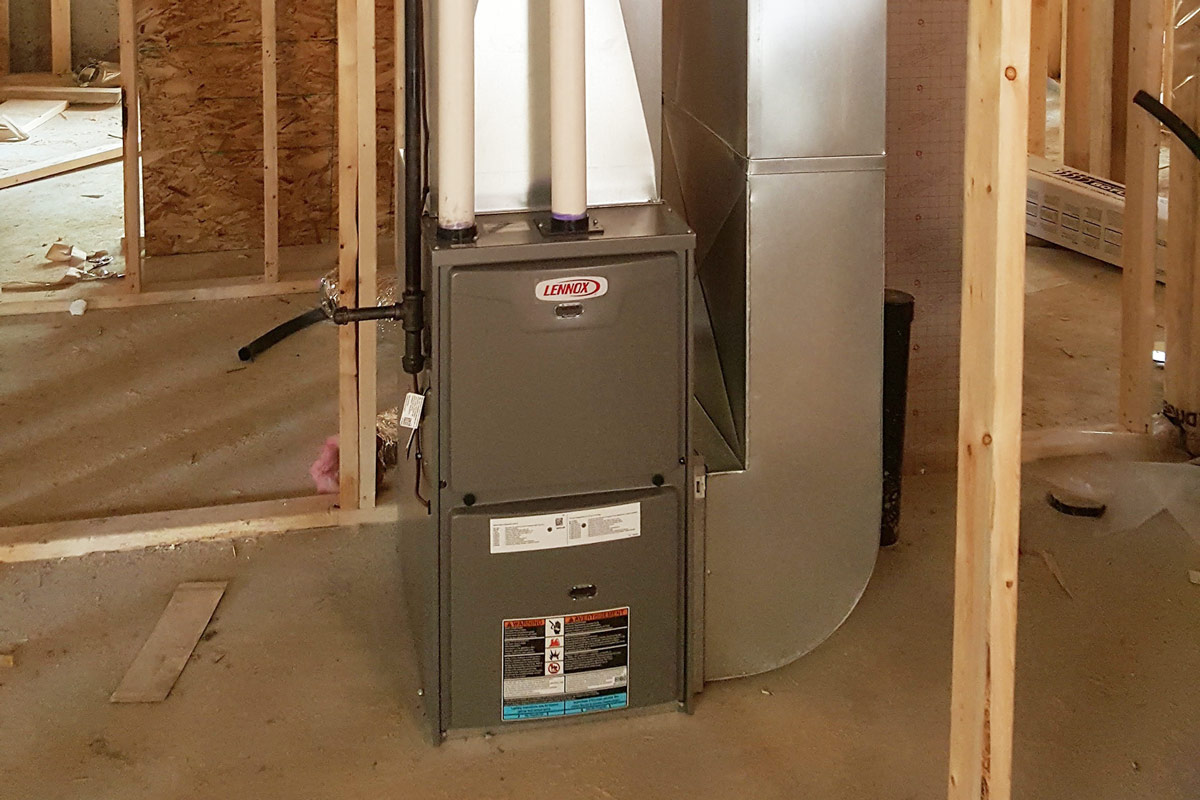How Much Does A Furnace Cost For A House

A failing furnace during the cold months can be a homeowner's nightmare. Not only does it disrupt your comfort, but it can also raise serious safety concerns. Before immediately calling a professional, however, there are some basic troubleshooting steps you can take to potentially resolve the issue yourself. This guide will walk you through those steps, emphasizing safety and when to call in the experts. Remember, working with gas or electricity can be dangerous. If you're unsure about anything, please consult a qualified HVAC technician.
Understanding the Problem: Common Furnace Issues
Furnaces, like any mechanical system, can experience a variety of problems. Here are some of the most common culprits:
- No Heat: The furnace turns on, but no warm air is produced.
- Weak Airflow: The air coming from the vents is weak and insufficient to heat the home.
- Strange Noises: Unusual sounds like banging, squealing, or rattling.
- Frequent Cycling: The furnace turns on and off repeatedly in short intervals.
- Pilot Light Issues (for older furnaces): The pilot light won't light or keeps going out.
- Burning Smell: A distinct burning odor when the furnace is operating.
Troubleshooting Your Furnace: A Step-by-Step Guide
Before beginning any troubleshooting, ensure you have proper lighting and are working in a well-ventilated area. Never work on a furnace while wearing loose clothing or jewelry.
Step 1: Check the Thermostat
This might seem obvious, but often the simplest solutions are overlooked. Ensure your thermostat is:
- Set to "Heat": Make sure the thermostat is actually set to heating mode.
- Set to the Correct Temperature: Ensure the temperature setting is higher than the current room temperature.
- Batteries (if applicable): Many digital thermostats require batteries. Try replacing them, even if the display seems to be working. Low batteries can cause erratic behavior.
- Thermostat Wiring: If you're comfortable and know how to shut off power, check the thermostat wiring connections. Loose or corroded wires can prevent the thermostat from communicating with the furnace. *If you are uncomfortable, call a professional.*
Step 2: Inspect the Power Supply
A furnace needs power to operate. Here's how to check the power supply:
- Circuit Breaker: Locate the circuit breaker for your furnace in your electrical panel. Make sure the breaker is in the "ON" position. If it's tripped (in the "OFF" or middle position), reset it by flipping it to "OFF" and then back to "ON". If the breaker trips again immediately, there's a more serious electrical problem that requires professional attention. Do not repeatedly reset a tripped breaker.
- Emergency Shut-Off Switch: Many furnaces have an emergency shut-off switch located near the unit. Ensure this switch is in the "ON" position. It might be a simple toggle switch or a red switch plate.
- Check Voltage (Advanced - Professional Only): Using a multimeter to check voltage requires knowledge of electrical safety and proper use of the device. This is best left to a qualified electrician or HVAC technician. Incorrect voltage can damage your furnace.
Step 3: Examine the Furnace Filter
A dirty or clogged furnace filter is one of the most common causes of furnace problems. A dirty filter restricts airflow, causing the furnace to overheat and potentially shut down. It can also lead to inefficient operation and increased energy bills.
- Locate the Filter: The filter is usually located in a slot near the blower motor. Consult your furnace's owner's manual if you're unsure.
- Inspect the Filter: Remove the filter and hold it up to the light. If you can't see light through it easily, it's likely clogged.
- Replace the Filter: Replace the dirty filter with a new one of the correct size and type. Ensure the arrow on the filter points in the direction of airflow.
- Filter Type: Use the recommended filter for your furnace. Higher MERV rated filters might improve air quality but can restrict airflow.
Step 4: Check the Pilot Light (For Older Furnaces)
If you have an older furnace with a pilot light, a malfunctioning pilot light is a common issue.
- Locate the Pilot Light Assembly: This is usually located near the burner assembly.
- Check for a Lit Pilot Light: If the pilot light is out, follow the manufacturer's instructions for relighting it. These instructions are usually printed on a label near the pilot light assembly.
- Safety Precautions: Before attempting to relight the pilot light, turn off the gas supply to the furnace. Wait a few minutes to allow any accumulated gas to dissipate.
- Relighting the Pilot Light: Most pilot lights have a button or knob that needs to be held down while lighting the pilot. Follow the instructions carefully.
- Pilot Light Won't Stay Lit: If the pilot light lights but goes out immediately, the thermocouple (a safety device that senses the pilot flame) may be faulty. Replacing the thermocouple is a relatively simple repair, but it involves working with gas and should be done by a qualified technician if you're not comfortable.
Step 5: Inspect the Blower Motor
The blower motor circulates the heated air throughout your home. If it's not working properly, you won't get any heat.
- Listen for the Blower Motor: When the furnace is running, listen for the sound of the blower motor. If you don't hear it, it could be faulty.
- Blower Motor Capacitor (Professional Only): The blower motor capacitor helps start the motor. A failing capacitor can prevent the motor from running. Testing and replacing the capacitor involves working with electricity and should only be done by a qualified technician.
- Obstructions: Ensure that the blower motor isn't obstructed by debris. Turn off the power to the furnace before inspecting.
Step 6: Check the Flame Sensor (For Newer Furnaces)
Newer furnaces use a flame sensor to detect the presence of a flame. If the flame sensor doesn't detect a flame, it will shut off the gas supply to prevent a gas leak.
- Locate the Flame Sensor: The flame sensor is usually a small metal rod located near the burner assembly.
- Clean the Flame Sensor: The flame sensor can become coated with carbon deposits, preventing it from working properly. Use a piece of fine-grit sandpaper or steel wool to gently clean the sensor. Be careful not to damage the sensor.
- Safety Precautions: Turn off the power and gas supply to the furnace before cleaning the flame sensor.
Step 7: Check the Gas Valve
The gas valve controls the flow of gas to the furnace. If the gas valve is faulty, the furnace won't be able to heat properly.
- Ensure the Gas Valve is Open: The gas valve should be in the "ON" position.
- Gas Valve Operation (Professional Only): Testing the gas valve requires specialized knowledge and equipment and should only be done by a qualified HVAC technician. Improper testing can be dangerous.
Step 8: Listen for Unusual Noises
Pay attention to any unusual noises coming from your furnace. Different noises can indicate different problems.
- Banging: Could indicate a problem with the ductwork or a delayed ignition.
- Squealing: Could indicate a worn-out blower motor bearing or belt.
- Rattling: Could indicate loose parts or debris inside the furnace.
If you hear any unusual noises, it's best to call a qualified HVAC technician to diagnose and repair the problem.
When to Call a Professional
While some furnace problems can be resolved with simple DIY fixes, others require the expertise of a qualified HVAC technician. Here are some situations where you should call a professional:
- You are uncomfortable working with electricity or gas.
- You suspect a gas leak. If you smell gas, evacuate your home immediately and call your gas company or the fire department.
- The furnace is making loud or unusual noises.
- The furnace is cycling on and off frequently.
- The furnace is not heating properly after you've tried the basic troubleshooting steps.
- You are unsure about how to diagnose or repair the problem.
- You are dealing with complex components like the gas valve, heat exchanger, or circuit board.
Safety First!
Safety is paramount when working with any appliance, especially a furnace that involves gas and electricity. Remember these crucial safety tips:
- Always turn off the power to the furnace at the circuit breaker before performing any maintenance or repairs.
- Never work on a furnace while wearing loose clothing or jewelry.
- If you smell gas, evacuate your home immediately and call your gas company or the fire department.
- If you are unsure about anything, call a qualified HVAC technician.
- Keep a carbon monoxide detector properly installed and working on every level of your home. Test regularly.
Regular Maintenance is Key
The best way to prevent furnace problems is to perform regular maintenance. Here are some tips:
- Replace the furnace filter regularly (every 1-3 months).
- Have your furnace professionally inspected and serviced annually.
- Keep the area around your furnace clean and free of debris.
- Ensure that your vents are not blocked by furniture or other objects.
By following these troubleshooting steps and performing regular maintenance, you can help keep your furnace running smoothly and efficiently, ensuring a warm and comfortable home all winter long. However, don't hesitate to call a professional when the situation demands it. Your safety and the proper functioning of your furnace are worth the investment.










